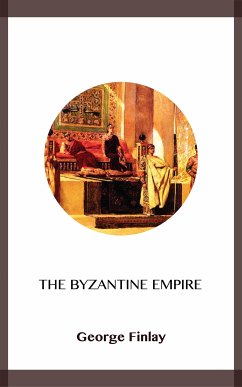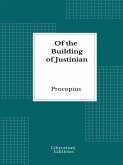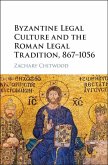For over a thousand years, the Byzantine Empire stood as a bastion of civilization, bridging the ancient and medieval worlds, preserving the intellectual heritage of Rome and Greece while forging its own distinct identity. In The Byzantine Empire, first published in 1853 as The History of the Byzantine Empire, George Finlay presents a sweeping and meticulous account of this remarkable civilization, tracing its triumphs, struggles, and ultimate decline. With a historian’s keen eye for political intrigue and a storyteller’s gift for narrative, Finlay illuminates the empire’s legacy in shaping European and Eastern history.
From the founding of Constantinople by Constantine the Great to the fall of the city to the Ottomans in 1453, Finlay explores the military campaigns, dynastic rivalries, and religious schisms that defined Byzantine rule. He examines the empire’s ability to withstand waves of invasions—from Persians and Arabs to Crusaders and Turks—while simultaneously fostering a rich cultural and artistic tradition. The rise of Justinian and his ambitious reconquest of the West, the iconoclast controversies, the flourishing of Byzantine diplomacy, and the empire’s gradual decline under internal strife and external threats are all vividly brought to life.
Finlay’s work is more than a political history; it is an exploration of the Byzantine world’s intellectual and economic achievements, its complex administrative structures, and its influence on European and Islamic civilizations. The empire’s legal codes, religious doctrines, and architectural wonders—from the grandeur of Hagia Sophia to the formidable walls of Constantinople—are examined as testaments to its enduring impact. He also offers a critical perspective on the empire’s weaknesses, from bureaucratic corruption to military overextension, which ultimately sealed its fate.
With its compelling blend of scholarship and narrative depth, The Byzantine Empire remains a cornerstone for understanding the medieval world and the forces that shaped modern Europe and the Near East. Finlay’s analysis is as relevant today as it was upon its original publication, offering a penetrating look into an empire that, though long fallen, continues to captivate historians and readers alike.
From the founding of Constantinople by Constantine the Great to the fall of the city to the Ottomans in 1453, Finlay explores the military campaigns, dynastic rivalries, and religious schisms that defined Byzantine rule. He examines the empire’s ability to withstand waves of invasions—from Persians and Arabs to Crusaders and Turks—while simultaneously fostering a rich cultural and artistic tradition. The rise of Justinian and his ambitious reconquest of the West, the iconoclast controversies, the flourishing of Byzantine diplomacy, and the empire’s gradual decline under internal strife and external threats are all vividly brought to life.
Finlay’s work is more than a political history; it is an exploration of the Byzantine world’s intellectual and economic achievements, its complex administrative structures, and its influence on European and Islamic civilizations. The empire’s legal codes, religious doctrines, and architectural wonders—from the grandeur of Hagia Sophia to the formidable walls of Constantinople—are examined as testaments to its enduring impact. He also offers a critical perspective on the empire’s weaknesses, from bureaucratic corruption to military overextension, which ultimately sealed its fate.
With its compelling blend of scholarship and narrative depth, The Byzantine Empire remains a cornerstone for understanding the medieval world and the forces that shaped modern Europe and the Near East. Finlay’s analysis is as relevant today as it was upon its original publication, offering a penetrating look into an empire that, though long fallen, continues to captivate historians and readers alike.









